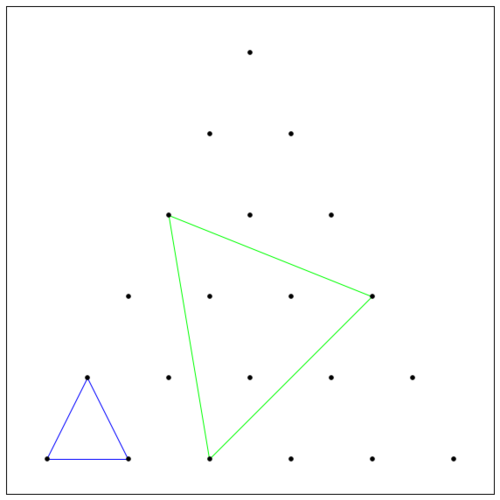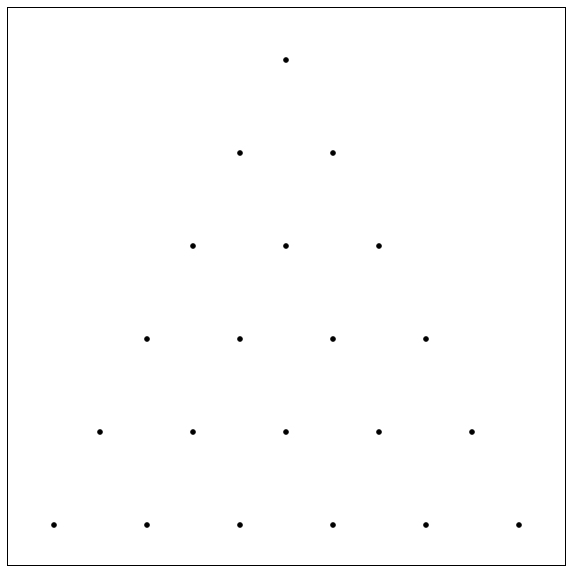Too Many Triangles?
 How many equilateral triangles can you make by joining the dots with straight lines on this equilateral triangular lattice of perimeter length 6?
How many equilateral triangles can you make by joining the dots with straight lines on this equilateral triangular lattice of perimeter length 6?

Details and Assumptions :
-
Assume the dots are in a perfect equilateral triangular lattice. My image is slightly stretched.
-
The Two Triangles in the above image are both valid examples of unique Equilateral Triangles.
Can't get enough of Counting Triangles? Try this question.
This section requires Javascript.
You are seeing this because something didn't load right. We suggest you, (a) try
refreshing the page, (b) enabling javascript if it is disabled on your browser and,
finally, (c)
loading the
non-javascript version of this page
. We're sorry about the hassle.
The general formula for n dots on the outer perimeter is given by ( 4 n + 2 ) . Since we have 6 dots on the outer perimeter we have a total of ( 4 8 ) = 2 4 8 × 7 × 6 × 5 = 7 0 unique equilateral triangles we can make.
Proof of the general formula is given here.
Let's count them all!
Let "Count so far" = 0. We'll use this to count them as we go.